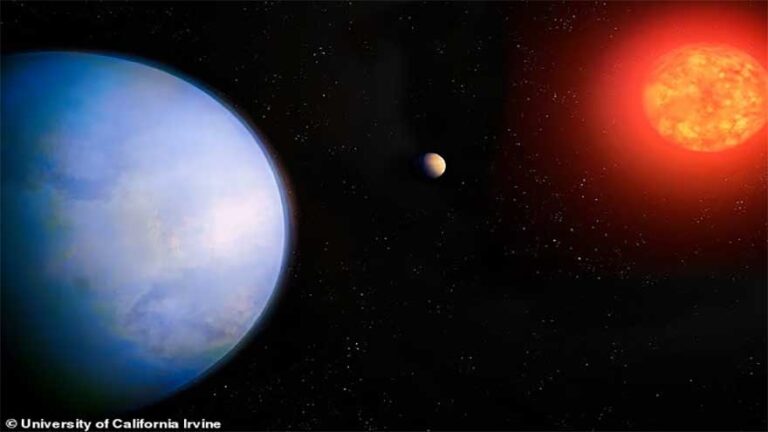(Web Desk) – Scientists have discovered a ‘super–Earth’ planet less than 20 light–years away, and it could have the right conditions for alien life.
The exoplanet, dubbed GJ 251 c, is at least four times larger than our own planet and is likely to be a rocky world.
However, what makes it truly special is that it sits within its star’s Goldilocks Zone – the region where liquid water can exist on the surface.
According to an international team of researchers, this makes the nearby planet one of the best candidates to host alien lifeforms.
To find the alien world, scientists combed through over 20 years of data to find tiny ‘wobbles’ in distant stars created by the gravity of orbiting planets.
While these wobbles don’t tell us much about conditions on the planet’s surface, they can reveal whether the planet is in the right location to support life.
Scientists don’t yet know whether GJ 251 c has an atmosphere, but new telescopes could reveal this within a decade.
Co–author Professor Suvrath Mahedevan, of Penn State University, told Daily Mail: ‘This discovery represents one of the best candidates in the search for atmospheric signature of life elsewhere in the next five to 10 years.’
Exoplanets – planets orbiting stars other than the sun – are so small, dim, and far away that astronomers aren’t able to see them through normal means.
Instead, scientists find them by looking for the signs that something is disturbing the orbit of their host star.
Professor Mahadevan explains: ‘We are often taught in school that planets orbit their host stars, but in reality, planets and stars orbit the common centre of mass of the system.
‘So the gravitational tug of the planet is also making the star go around this centre of mass, but this wobble is tiny – only about nine centimetres over a year for the Earth around the Sun.’
Since GJ 251 c is so much bigger than Earth and its star so much smaller, this wobble is large enough for modern telescopes to detect.
To find the exoplanet, Professor Mahadevan and his co–authors used a device called the Habitable–Zone Planet Finder (HPF), which is essentially a complex prism that breaks apart the signals from starlight.
Thanks to two decades of observations, scientists already knew that there was another planet, known as GJ 251 b, orbiting this star every 14 days.
But when they looked more closely using the HPF, they found that there was a stronger signal repeating every 54 days.
Related Topics
Subscribe Dunya News on YouTube
‘ ;
r_text[1] = ” ;
r_text[2] = ” ;
r_text[3] = ” ;
r_text[4] = ” ;
r_text[5] = ” ;
r_text[6] = ” ;
var i = Math.floor(r_text.length * Math.random());
document.write(r_text[i]);
Images are for reference only.Images and contents gathered automatic from google or 3rd party sources.All rights on the images and contents are with their legal original owners.

